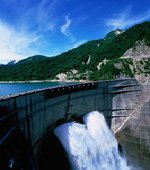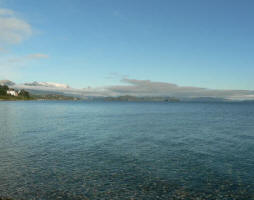 Water, food and energy: the trilemma facing the 21st century
Water, food and energy: the trilemma facing the 21st century
The International Energy Agency’s (IEA) warning in November’s World Energy Outlook that water demand would outstrip energy demand two-fold highlighted the scale of water-energy nexus.
The reality is more complex.
“Energy, food and water is the trilemma facing the twenty-first century,” Dr Anne Kerr, Regional Director for Asia with engineering consultant Mott MacDonald, told a break-out session at last February’s KPMG’s Rio+20 Business Summit.
Traditional water-energy nexus thinking highlights the mutual importance of water and conventional energy. Energy is fundamental to collect, transport, distribute and treat water. Water is essential to extract, process and refine fossil fuels.
In the US, half of water withdrawals are for energy, including cooling nuclear and thermal power plants that also contribute thermal pollution by returning hot water to waterways, causing blue-green algal bloom.
The onset of climate change further exacerbates the interconnectivity of the energy-water nexus. Water shortages have the potential to cause power shutdowns – most famously in France during the hot summer of 2003 where nuclear plants were closed as river levels were too low to cool the plants – and droughts in US, China and India can cripple hydro-electricity output.
Water scarcity limits exploitation of China’s shale gas reserves and, in the US, constrains development of the Bakken oil and gas formation – currently providing independence from foreign oil imports.
Critically, a global population expansion to 9 billion people by 2050, coupled with increased economic growth, will intensify competition for water, as well as increasing the need for food and energy, creating a trilemma for 21st century society to resolve.
The Water Resource Group’s 2009 report ‘Charting our Water Future’ predicted a global water gap of 40% between demand and accessible water by 2030 and that water consumption is set to rise from 4,500 billion cubic metres to 6,900 billion cubic metres with no change to business as usual practices and policies, such as improved ‘crop per drop’ irrigation and rain-fed measures.
Agriculture accounts for 71% of current total global water withdrawals. A 50% population increase will exponentially increase agricultural output, requiring more water and energy through fertilisers, harvesting and processing. India could double water consumption through to 2030 to 1.5 trillion cubic metres, leaving the country with a 50% water gap.
Anticipating any substantially positive impact of genetically modified organisms (GMOs) in developing plants that combine higher energy content with reduced water consumption is difficult.
This water gap presents the opportunity for water-rich countries, such as Canada, to address how to maximise its freshwater resources to provide ‘virtual’ water through intensive products and commodities to water scarce countries, according to Bob Sandford, Chairman of the UN’s Water for Life Decade.
Current energy trends exacerbate the trilemma. Average global temperature increases of 3.6°C are likely, warned the IEA. The current global energy infrastructure will contribute 80% of the greenhouse gas emissions necessary to reach a 2°C warming, the threshold of serious climate change predicted by the Intergovernmental Panel on Climate Change (IPCC). And the US Third National Climate Assessment released this January suggested extreme scenarios could lead to a temperature increase of more than 5°C by the end of the century, causing cataclysmic climate change by IPCC projections.
Moving from this current energy trend is problematic. Fossil fuels are projected to comprise 80% of global energy demand to 2035 with current policies. A shifting of fossil fuel subsidies to renewable energy subsidies could see renewable energy supply over 60% of demand, say the IEA.
From a water perspective, this energy shift could be advantageous. Energy’s water dependency accounted for 15% – 583 billion cubic metres – of global water withdrawals in 2010. While only 66 billion cubic metres are not returned to source, energy-related water withdrawals are anticipated to increase by 20% by 2035, with a dramatic 85% increase in consumption. The rate of water not returned to source would almost double to 120 billion cubic metres.
In contrast, the use of renewable energies to 2035 is predicted to increase water consumption by only 4% although some technologies – such as concentrated solar power, which generates steam to drive turbines, as is the case in the proposed Desertec project – would be more water intensive than others. Tackling climate change through measures such as carbon capture storage could also prove to be water intensive.
But energy is vital to humanity and development. Worldwide 1.3 billion people have no access to electricity, while 2.6 billion people use traditional biomass for cooking.
Does the world need to rely on fossil-fuels to bridge this energy gap?
Jacobson and Delucchi’s study in the March 2011 edition of Energy Policy suggested wind, water and sunlight (WWS) can provide all new energy to 2030 and replace pre-existing energy sources by 2050.
Society, industry, governments and investors have to wake up to the reality surrounding food, energy and water – and fast. There are alternatives to fossil fuels but there are no alternatives to food, or freshwater.
| Contact information |
Felix von Geyer, freelance sustainable development journalist
|
|---|---|
| News type | Inbrief |
| File link |
http://www.stakeholderforum.org/sf/outreach/index.php/component/content/article/170-irena-wrap-up/1386-water-food-and-energy-the-trilemma-facing-the-21st-century |
| Source of information | Felix von Geyer, freelance sustainable development journalist |
| Keyword(s) | Water, food, energy |
| Subject(s) | AGRICULTURE , DRINKING WATER , ENERGY , FINANCE-ECONOMY , HYDRAULICS - HYDROLOGY , INDUSTRY , NATURAL MEDIUM , POLICY-WATER POLICY AND WATER MANAGEMENT , RISKS AND CLIMATOLOGY , WATER DEMAND |
| Relation | http://www.semide.net/topics/water-energy |
| Geographical coverage | n/a |
| News date | 21/01/2013 |
| Working language(s) | ENGLISH |
 you are not logged in
you are not logged in





